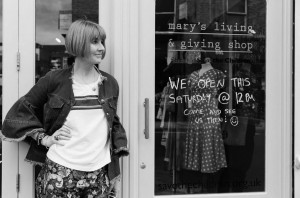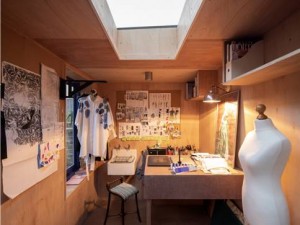“Architecture is not just about what we build – but how we live.”
We have been captured by Mary Portas’ work on the Kindness Economy. This new value system requires businesses to understand the fundamental role they play for the wellbeing of people and the wider fabric of our society. At the heart of this approach is the need to balance commerce with social progress. We also see the need to balance our architectural and design business with the environment. In this post, we reflect on what we have learned about the Kindness Economy that resonates with our work at RISE Design Studio.
Our shifting relationship with buildings
As we emerge from the Covid-19 pandemic, we are realising just how much buildings influence every part of our lives. After spending more time in our homes and immediate neighbourhoods than ever before, we have become more aware of how we interact with the buildings we inhabit and how nature is reflected both internally and externally within and close to our homes.
In her recent podcast with Amanda Levete CBE, Mary Portas suggests we are going through a radical shift in our relationships with buildings. Architects are therefore at the forefront of designing our world post-pandemic. Buildings are the greatest expression of the idea of community and we need to understand who we are building for, particularly as different communities have different values, which need to be reflected in the architecture that surrounds them.
Lead by example
There is growing concern that volume housing is often built cheaply, with a focus on maximum profit for the developer, rather than on achieving maximum impact for the people who live there. As architects, we need to understand who we are building for and tailor designs accordingly. Different communities need different buildings, and housing should be designed around shared values not the value of a project or the resulting profit.
In an era of spending more time living and working in the home, it seems conceptually inappropriate that the design is in many cases driven by profit for someone who is not rooted in, or connected with, that community. This raises questions about how to encourage a shift in approach – Mary Portas would argue that this can be done by leading by example and showcasing successful projects for others to take inspiration from.
Between office and home
What will change as many of us start to return to the office? It is perhaps hard to predict but within the Kindness Economy there lies potential to re-imagine the office as a family home. Small companies may move from warehouses into townhouses, creating a homely office or a neighbourhood co-working space. It will be important for companies to have conversations with their staff about the future, to achieve a more positive work/life balance.
Attracting people back to the office will also require more thought about what kind of spaces people want and whether they want to work in those spaces. There is an opportunity to design buildings from which everyone has access to some outdoor space, nurturing the connection between inside and outside, and the local environment that we have all got to know so well when our movement was restricted.
Nurture community and connection
Although we live in an increasingly digital world, we are arguably more disconnected than ever before. Enforced remoteness and distance has negatively affected the culture and connectedness of our lives. As we re-emerge, we need places to meet, to learn new skills, and to feel a sense of culture around us. As we look to new ways of living and working, social interaction will be very important. How can people be put at the heart of buildings?
As many town centre properties lie empty, there is now an opportunity to begin a transformation but this will need risk-taking, innovation and creativity. Mary Portas points out the immediate opportunity to re-purpose these buildings without extensive demolition, in a way that exploits the characteristics that make a building so difficult to convert – a large central atrium, perhaps, or large indoor spaces with no natural light.
While challenging, these are exciting opportunities for architects – perhaps we can convert old department stores into spaces that are home to community functions and activities that will help to bring us all together again? Perhaps they could become places where people can grow food, making use of the latest technology in hydroponic farming? People’s concepts of a shop have changed and there is growing agreement that we need to re-purpose and re-vision these properties to create spaces and activities to bring people together.
You can visit one of Mary’s Living and Giving Shops across the UK.


